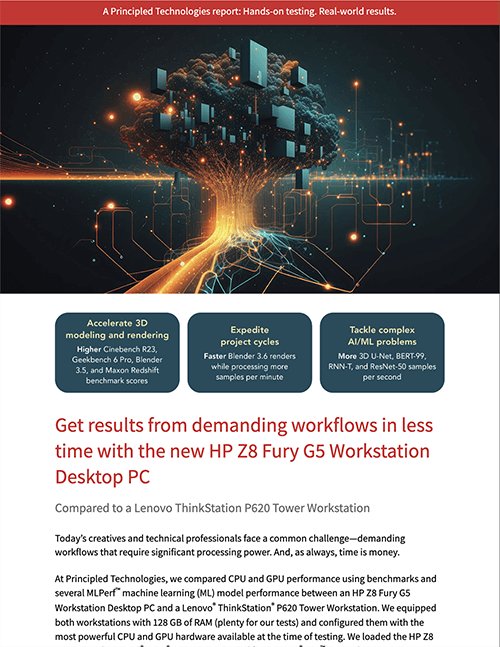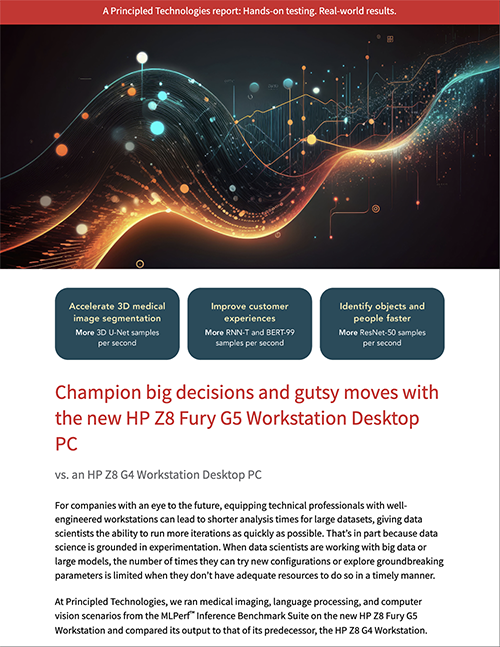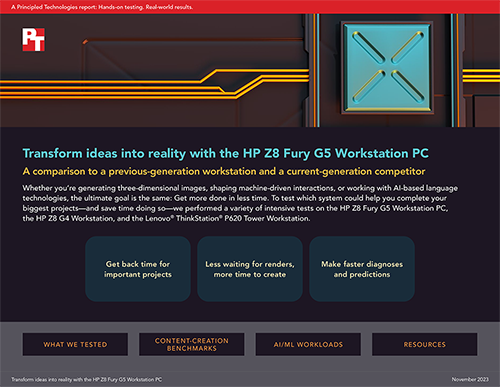
If you survey the horizons of innovation in almost any major industry today, you’ll find leading researchers, engineers, and data scientists discovering unprecedented ways to utilize powerful AI tools to speed and improve their work. These modern-day explorers are steadily transforming the world around us, from infrastructure to medical diagnostics to finance and more. To keep breaking new ground, they’ll need future-proof computing power that can quickly churn through expanding datasets and handle increasingly complex models. The difference between success and failure can sometimes come down to having the right tools for the job, so time-sensitive cutting-edge research demands proven cutting-edge gear.
We used 3D medical imaging, natural language processing, and computer vision scenarios from the MLPerf Inference Benchmark Suite to compare the AI/ML performance of three powerful workstations: the new HP Z8 Fury G5 Workstation equipped with an Intel Xeon w9-3495X processor, a Lenovo ThinkStation P620 equipped with an AMD Ryzen Threadripper PRO 5995WX processor, and a previous-gen HP Z8 G4 Workstation equipped with an Intel Xeon Gold 6258R processor. The MLPerf scenarios included machine learning inference workloads that used four models—3D U-Net, RNN-T, BERT-99, and ResNet-50—that test how quickly systems can process inputs (samples) and produce results. In each workload, the new Z8 Fury G5 classified more samples in less time than both the Lenovo and Z8 G4 systems.
Our results show that choosing the Z8 Fury G5 over the ThinkStation P620 or the Z8 G4 can provide a serious performance advantage and significant time savings when handling the types of AI/ML workloads that help visionary innovators solve complex problems every day. If you want to bring the power of AI to your work, the Z8 Fury G5 Workstation may be just the tool you need.
To see more about our HP Z8 Fury G5 evaluation tests, check out the reports and interactive PDF below.
Principled Technologies is more than a name: Those two words power all we do. Our principles are our north star, determining the way we work with you, treat our staff, and run our business. And in every area, technologies drive our business, inspire us to innovate, and remind us that new approaches are always possible.








